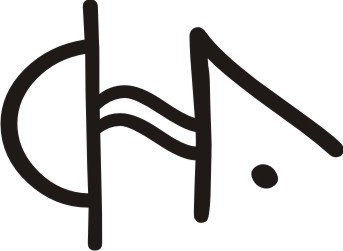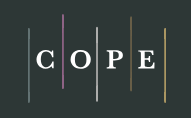Prácticas de cocreación con entidades bióticas.
Alcances y límites de un arte más allá de lo humano.
Palavras-chave:
AGENCIA, NUEVOS MATERIALISMOS, ARTE TECNONOLOGICO, POSTHUMANISMO.Resumo
En los últimos años diversos autores han dado cuenta de lo que podría llamarse un giro materialista en los estudios filosóficos y culturales. Se trata de una vuelta hacia la materia que elude toda posición de esta como pasiva e inerte, para ser pensada en función de sus capacidades de agencia y organización. Partiendo de la tarea ya iniciada por el poshumanismo en torno al descentramiento del sujeto, diferentes producciones dentro del arte tecnológico abordan el concepto de cocreación a partir de la consideración de la agencia material de entidades bióticas. A partir de algunos casos dentro de las tecnopoéticas latinoamericanas, el presente artículo analiza los alcances y las consecuencias de este abordaje para el pensamiento estético. El concepto de cocreación también implica entender que estas producciones no son modos de observación de lo vivo, sino cruces hibridaciones diálogos encarnaciones especulativas, que no se dan entre entidades capaces de agencia, sino en la agencia misma.
Referências
ADLER Jazmín. “Artes electrónicas argentinas en el zaguán de la escena internacional: Idearios de modernización y devenires institucionales oscilantes” en: Art nodes, Revista de arte y tecnología (Catalunya: Universitat Oberta de Catalunya, 2017), p.44.
ARANTES, Priscila; BADINI, Pat; HERNANDEZ GARCIA, Iliana; KOZAK, Claudia “Introducción N°11 – Deslocalidades, translocalidades y activismo en el arte electrónico y biomedial latinoamericano”, en Artlogie Recherche sur les arts, le patrimoine et la littérature de l'Amérique latine, N.º 11 (París: Asociación ESCAL, 2017).
BRAIDOTTI, Rossi. Lo poshumano (Barcelona: Editorial Gedisa, 2015).
CAPUCCI, Pier Luigi. “The Double Division of the Living”, en MULATERO, Ivana. (ed.) From Land Art to Bio Art (Turín: Hopefulmonster, 2008).
COOLE Diana, FROST, Samantha. “Introducing the New Materialisms” en New Materialisms: Ontology, Agency, and Politics (Durham: Duke University Press, 2010).
COSTA Flavia. “El arte de la vida. Del Bioarte a las formas relacionales.”, en KOZAK Claudia. (ed.) Poéticas, políticas tecnológicas en Argentina 1910-2010, (Paraná: Editorial Fundación La Hendija, 2014), p.223.
FLEISNER, Paula. Materialismo posthumano: por una ontología, una política y una estética no antrópicas, [Conferencia en formato de video]. Ponencia presentada en Seminario de Filosofía Interfacultades, Pontificia Universidad Javeriana, Bogotá, 2019, web: https://www.youtube.com/watch?v=LX5TX36YgjA&t=1789s, (en línea: 2022).
HARAWAY, Donna. Seguir con el problema. Generar parentesco en el Chthuluceno (Bilbao: Consonni,2016).
HERNÁNDEZ, Iliana. “Estética de lo posible: vidas que emergen y vidas preexistentes en HERNÁNDEZ, Iliana., NIÑO, R. (eds) Estética, vida artificial y biopolítica: expansiones en la evolución cultural y biológica a través de la tecnología (Bogotá: Colección Estética contemporánea, Pontificia Universidad Javeriana, 2010).
HÖRL Erich. “A Thousand Ecologies: The Process of Cyberneticist and General Ecology”, en DIEDERICHSEN Diedrich, FRANKE Anselm (Comp.) Whole Earth. California and the Disappearance of the Outside, (Berlín: Sternberg Press, 2013).
IOVINO, Serenella, OPPERMAN, Serpil. “Material Ecocriticism: Materiality, Agency, and Models of Narrativity”, en Ecozon@ European Journal of Literature Culture and Environment (Alcalá: Universidad de Alcala, 2012), p.77, web: https://ecozona.eu/article/view/452/477 (en línea: 2022).
LATOUR, Bruno. La esperanza de pandora. Ensayos sobre la realidad de los estudios de la ciencia (Barcelona: Ediciones Gedisa, 2001).
LÓPEZ DEL RINCÓN, Daniel. Bioarte: arte y vida en la era de la biotecnología (Barcelona: Akal, 2015).
LUDUEÑA ROMANDINI, Fabián. Más allá del principio antrópico. Hacia una filosofía del outside (Buenos Aires: Prometeo,2012), p.6.
YEREGUI, Mariela. “Prácticas co-creativas. Descolonizar la naturaleza” en Artlogie Recherche sur les arts, le patrimoine et la littérature de l'Amérique latine, N.º 11 (París: Asociación ESCAL, 2017), web: https://journals.openedition.org/artelogie/1601, (en línea: 2022).
Downloads
Publicado
Como Citar
Edição
Seção
Licença
Copyright (c) 2022 Magdalena Sofia Mastromarino

Este trabalho é licenciado sob uma licença Creative Commons Attribution-NonCommercial-ShareAlike 3.0 Unported License.
Los artículos enviados al Comité Editor del Instituto de Historia del Arte, para ser publicados, los autores reservan su derecho de propiedad, pero otorgan a la Editorial los derechos de impresión y aceptan la difusión tanto en papel, como en internet y en aquellos sitios virtuales de las cuales los CHA formen parte.

Esta obra está bajo una Licencia Creative Commons Atribución-NoComercial-CompartirIgual 3.0 No portada


















_00.07_.55_2.png)





